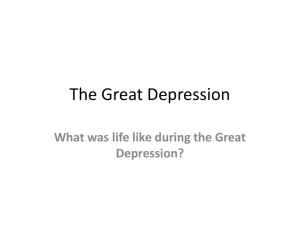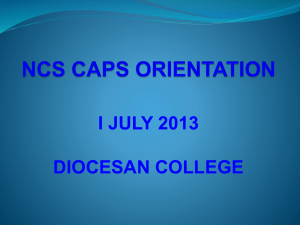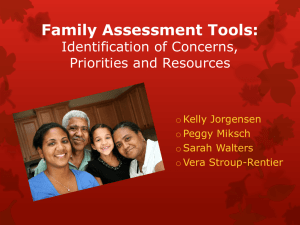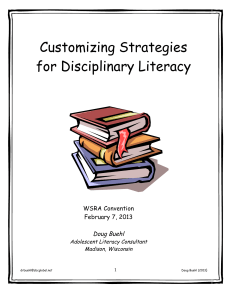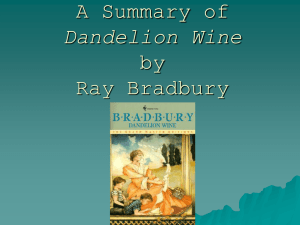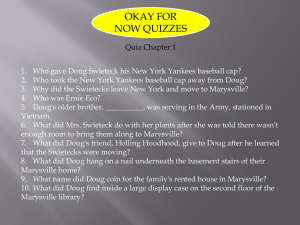April Webinar - strategies - CTE Technical Assistance Center of NY
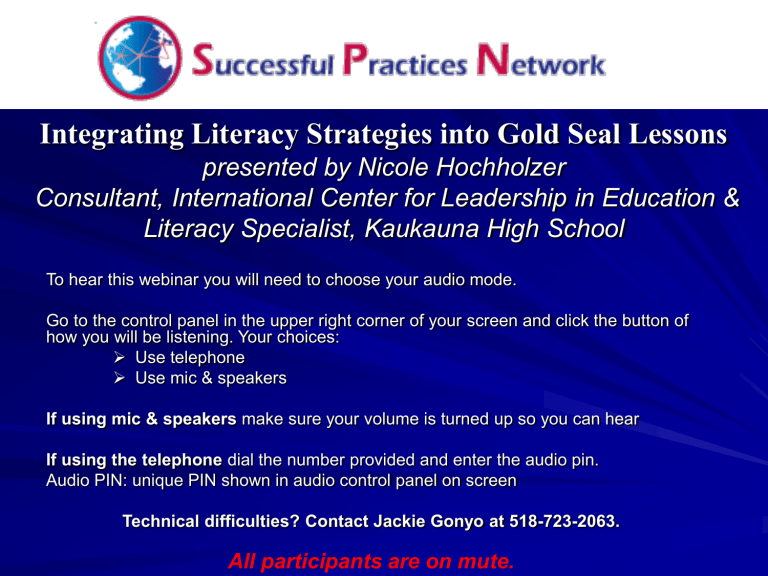
Integrating Literacy Strategies into Gold Seal Lessons presented by Nicole Hochholzer
Consultant, International Center for Leadership in Education &
Literacy Specialist, Kaukauna High School
To hear this webinar you will need to choose your audio mode.
Go to the control panel in the upper right corner of your screen and click the button of how you will be listening. Your choices:
Use telephone
Use mic & speakers
If using mic & speakers make sure your volume is turned up so you can hear
If using the telephone dial the number provided and enter the audio pin.
Audio PIN: unique PIN shown in audio control panel on screen
Technical difficulties? Contact Jackie Gonyo at 518-723-2063.
All participants are on mute.
Webinar Guidelines
All participants are on mute during the entire webinar.
• Presentation portion will be 45 minutes
• Questions and Answers portion will be 15 minutes
To ask a question type it in the question control panel in the upper right corner of your screen.
Content questions will be answered in the order they were received at the end of the webinar presentation.
• We will send you a follow up email with the PowerPoint presentation and helpful resources
Does this make sense?
With hocked gems financing him, our hero bravely defied all scornful laughter that tried to prevent his scheme.
“Your eyes are deceived” he had said. “An egg not a table correctly typified this unexplored planet.” Now three sturdy sisters sought proof. Forging along sometimes through calm vastness, yet more often over turbulent peaks and valleys. Days became weeks as many doubters spread fearful rumors about the edge.
At last from somewhere, welcomed winged creatures appeared signifying momentus success.
From: Subjects Matter by Daniels and Heinemann
COMPREHENSION
Sometimes we spend so much time thinking about the “new stuff” that we don’t realize kids might not know the hidden knowledge
Teaching to the “Match”
If you’re well matched you say, “I just read it.”
If you’re somewhat matched you say, “I got some of it.”
If you’re mismatched you say, “I didn’t get it at all.”
So what are your choices?
“You read it, come back and I’ll tell you what it said.” Or hold a “class” discussion.
“We don’t really DO reading in my class.” Kids remain frozen as readers during your hour.
You might need to build background knowledge
FOR reading not THROUGH reading.
Content Area Strategies
Pre-Reading Strategies
During Reading Strategies
Post-Reading Strategies
Let’s start with Pre-Reading…
Pre-Reading Strategies
Set a student up for success
Familiarize students with new vocabulary words, concepts and terms
Ignite interest in the reading
Establish purpose for reading
Make connections to their own life, prior knowledge and/or other courses
List of Quick Write Prompts
I learned…
I remember that…
I already knew that…
I was wrong to think…
I would explain…
The confusing thing…
I was surprised…
A person should know…
My definition of this…
A key term is…because
I can tell you that…
Something I should share about this is…
I want to learn more about…
Something that people get wrong about…is…
I changed my thinking about…
A brief summary of…should include…
Difference between:
Ask the whole class: Ask the whole class:
“What is an integer?”
“Write down and explain what an integer is.”
What to do with the writing?
Collect the writings
Circuit the writings: pass two or three or ten times – as much as you like!
Create a gallery walk
A B
Sequential Roundtable Alphabet
C D E F G
H I J K L M N
O P Q R S T U
V W X Y Z
A
Assessment
B
Sequential Roundtable Alphabet
C D E F
Comprehend Differentiate
G
H I J K N
O
V
P
W
Q
Quiet
X
Xerox
R
Y
L
Lexile
M
S
Strategy
T
Z
U
Sequential Roundtable Alphabet
Use 7 – 10 minutes
Using every letter of the alphabet, try to come up with a word or phrase that fits the unit or topic
Ask, “Why should I accept that?”
Each group goes up with transparency and each group subsequently puts up only new words.
Source: Doug Buehl
Just a thought…
“If kids don’t ever have to access your discipline through reading it in your class, they’ll never do it on their own.”
Doug Buehl
Story Impressions
Give students a list of words or phrases which they use to write a paragraph anticipating the content of a reading
Cut away everything but the key concepts and phrases
Advantages: builds anticipation for reading and also allows for more “quick writes” practice
Doug Buehl, Classroom Strategies for Interactive Learning
Try this…
The Great Depression: 1929 to the 1940’s
Black Tuesday
Failed banks
Hobo camps
Dust Bowl
Young Adults
Story Impressions
Doing with a partner reduces anxiety and allows for more discussion of content
Use as a post-reading summary by adding
5 new words
Use this as an essay prompt
During Reading Strategies:
Help students “hold their thinking”
Help students make connections while they read
Encourages students to visualize
Encourages questioning
Helps students improve their ability to selfmonitor as they read
Q-NOTES
Similar to Cornell Notes
Go through the text or reading, looking at titles, subheadings and topic sentences
Using the left-hand 1/3 of the paper, turn those titles, etc. into questions
On the right-hand 2/3 of the paper answer the question with information from the text or reading
Use bullets or dashes to help organize your ideas, use symbols and abbreviations to help you take notes more efficiently
Source: Jim Burke
Q NOTES
Name_________________
Topic________________
Date_____________
Period___________
Turn titles, subheadings & topic sentences into questions in this column
Write answers to the questions here
__________________________
__________________________
__________________________
__________________________
__________________________
__________________________
__________________________
__________________________
__________________________
Pairs Read
Put students in pairs (duh!) and ask students to determine who is “A” and who is “B”.
Students will read the text paragraph by paragraph, with Student A reading the paragraph and Student B paraphrasing what was read, then alternating.
Source: ICLE Strategic Reading Kit
Alternatives for Pairs Read
Students can read silently, then take turns paraphrasing what was read.
Students can read, then choose one of the following:
1. Make a comment
2. Ask a question
3. Make a connection
The Lesson
Research Suggests a New Format
Traditional Format New Format
Reading
Assignment
Given
Independent reading
Prereading Activities
Discussions
Predictions
Questioning
Brainstorming
Setting Purpose
Guided
ACTIVE
Silent Reading
Activities to clarify, reinforce, extend
Knowledge Discussion to see if students learned main concepts, what they
“should have” learned
Source: McRel
Post-Reading Strategies
Allows students to process their thinking more deeply and carefully
Gives students a clear “record” of their reading and their processing
Rock Around the Clock
Main Idea Key Words and Meanings
Important Points
Ahha’s (Insights) Unanswered Questions
Source: ICLE Strategic Reading Kit
Rock Around the Clock
Main Idea Key Words and Meanings
The Great Depression was a difficult time in our nation’s history.
Black Tuesday
Dust Bowl
Frugally
Important Points
Black Tuesday was on October 24, 1929 when stock prices fell rapidly
Dust Bowl was in the Midwest and Southwest where, because of drought, crops couldn’t’ grow
Ahha’s (Insights) Unanswered Questions
This is why people keep comparing this economy to the Great Depression
I still don’t understand what a hobo camp is.
Source: ICLE Strategic Reading Kit
Summary Pyramid
Reading __________________________
__________________
1 word to describe this topic
_________ ________
2 words to describe subheadings of the topic
__________ __________ __________
3 words to describe what you already know about the topic
__________ __________ __________ __________
4 words to describe what you learned
________ ________ ________ ________ ________
5 words to describe other knowledge that connects to this knowledge
One sentence summary: ____________________________________
Source: Doug Buehl
Summary Pyramid
Reading The Great Depression 1929 to the 1940s
The Great Depression
1 word to describe this topic
Stocks Farming
2 words to describe subheadings of the topic
Black Tuesday frugal
3 words to describe what you already know about the topic
Dust Bowl Hobo Camps
4 words to describe what you learned
Great Depression influenced future generations
5 words to describe other knowledge that connects to this knowledge
One sentence summary: Many people endured hardship when stocks fell and people lost jobs, their money and their homes.
Nicole Hochholzer
(920)766-5948
(920)766-6113 x5430 nhochholzer@hotmail.com



